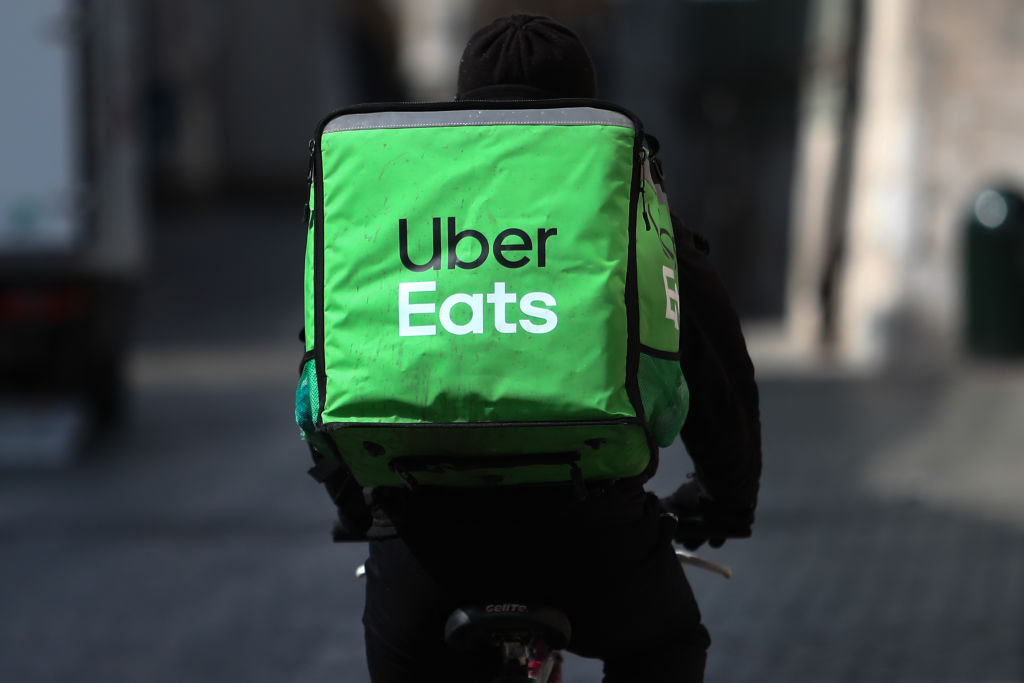It is tempting to assume that the ride-hailing model is going the way of moribund businesses, especially in the wake of Lyft’s well-publicized layoffs and executive turnover. But Uber’s earnings results for the first quarter partially dispel those concerns.
Uber not only beat analysts’ expectations across the board, it also demonstrated that its financial footing is growing firmer: Its multipart business model is going well now that its food delivery business, which supported its ride-hailing efforts during the pandemic, is handing the growth baton back to the company’s original enterprise.
The Exchange explores startups, markets and money.
Read it every morning on TechCrunch+ or get The Exchange newsletter every Saturday.
In the first quarter, Uber’s revenue of $8.82 billion topped analysts’ expectations by about $100 million, which is significant. The company’s GAAP loss was also narrower than expected ($0.08 in per-share loss compared to the average analyst estimate of a $0.09 per share loss), while its adjusted profits came in better than the street reckoned ($761 million in adjusted EBITDA compared to the estimate of $678.6 million). Shares of the company spiked following the announcement and are up 8.9% at $35.68.
 Against the backdrop of Lyft’s struggles and tepid growth at major tech companies, this morning, we’re digging into Uber’s results, looking at the good, the less-good and the curious. Our goal is to understand the company’s recent performance, and we’ll close with a note on Uber’s profitability-growth trade-off as it exists today, and what that can tell us about investor sentiment today.
Against the backdrop of Lyft’s struggles and tepid growth at major tech companies, this morning, we’re digging into Uber’s results, looking at the good, the less-good and the curious. Our goal is to understand the company’s recent performance, and we’ll close with a note on Uber’s profitability-growth trade-off as it exists today, and what that can tell us about investor sentiment today.
That last bit is key for startups looking to raise more capital, so read closely. To work!
Highlights and lowlights
Uber saw its gross bookings rise 19% to $31.4 billion in the first quarter from a year earlier (bookings rose 22% after adjusting for currency fluctuations, but we’re sticking to flat figures for the rest of this post). The company’s revenue rose 29%, bolstered by a change in how Uber handles its U.K.-based accounts.
Uber’s gross bookings are derived from its two major businesses, ride-hailing and food delivery (more data here):
- Q1 ride-hailing bookings rose 40% to $14.98 billion from a year earlier.
- Q1 food delivery bookings rose a far more modest 8% to $15.03 billion.
In other words, ride-hailing at Uber caught up to food delivery in the quarter. However, given the difference in economic profile (rides have a higher take-rate of 28.9% compared to food delivery’s 20.6% rate), the growth of ride-hailing this quarter boosted both revenue and adjusted profitability for that segment, driving $1.06 billion of adjusted EBITDA in the quarter. Food delivery was worth a comparatively modest $288 million in adjusted EBITDA.
When crossed with operating cash flow of $606 million (compared to just $15 million a year ago!), the encouraging results helped the company’s free cash flow surpass the $500 million mark in the quarter. That means Uber is now rather profitable from many angles.
The cake’s even sweeter because Uber’s forecasts also came in ahead of analysts’ estimates: Uber expects adjusted EBITDA of $800 million to $850 million in the second quarter, on gross bookings of $33 billion to $34 billion — both ranges’ midpoints are above estimates.
In short, the company’s near future looks bright, and investors are buying in.
Is there a “but” here?
Reading an Uber earnings report is always a process of some digestion. It’s easy to get a little lost because the company’s multifaceted business model (mobility, delivery, freight) is spread across the world (North America, Latin America, EMEA, and APAC) and can be broken down along various axes (“Segment Adjusted EBITDA”!).
Thankfully, we can focus on a few numbers to get a better feel for the company’s future. For example, at the midpoint of Uber’s gross bookings estimate for Q2 2023 ($33.5 billion), we can calculate that the company is effectively forecasting a 15% rise in the second quarter (compared to Q2 2022’s result of $29.08 billion). That is not only a step down from its Q1 result of 19%, it’s also the slowest rate that its gross bookings have risen since at least Q1 2022.
Put another way, the recent growth in bookings at the company is slowing. That limits revenue growth, gross profit growth and the pace at which Uber generates adjusted incomes.
Investors are content because the company is forecasting better results than they’d expected, but Uber is telling us that its post-pandemic recovery period, and the rapid growth it brought, is ending.
Why aren’t investors, you know, mad about that? A few reasons:
- Uber is not valued like a growth stock; YCharts pegged Uber’s price/sales multiple before its earnings were released at just over 2x its trailing top line. That’s not the sort of multiple we see with growth-focused stocks.
- Instead, Uber is valued like a slower-growing company focused on profitability. The massive amount of cash generated in the first quarter — $549 million in free cash flow — contrasted with $470 million in share-based expenses imply that the company could start buying back its own stock to combat continued dilution.
- Further, the company is increasingly close to GAAP profitability, a far stricter method of determining black ink than the adjusted EBITDA metric that startups favor. Put another way, Uber is about to graduate to big-kid profit metrics, which is another sign of maturity.
It may feel odd to consider that Uber is starting to show signs of becoming a profit center instead of a growth story, but that’s where the numbers are trending.
Uber currently occupies a propitious position in the mind of investors as it shifts its stance from growth toward profit. Some companies struggle with that transition, but Uber is charting a more welcome path.
The lesson for startups in all of this is not too hard to sort out:
- You can swap growth for profit, but investors still care about the former as the latter improves.
- The bar is really high for a win.
Uber crushed trailing expectations, beat forecast calculations and is showing strength in other areas that indicate good corporate health. In short, it’s possible to excel even with slowing growth, but that’s easier said than done.
It is good news that there are demonstrated ways for unprofitable (in GAAP terms) tech companies to delight investors. The bad news is that after watching much of this Q1 earnings cycle, it appears Uber is more the exception than the norm. The path ahead for startups seems narrow indeed.































Comment